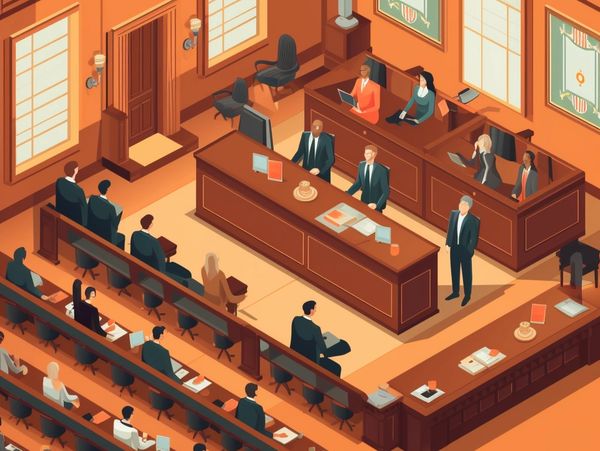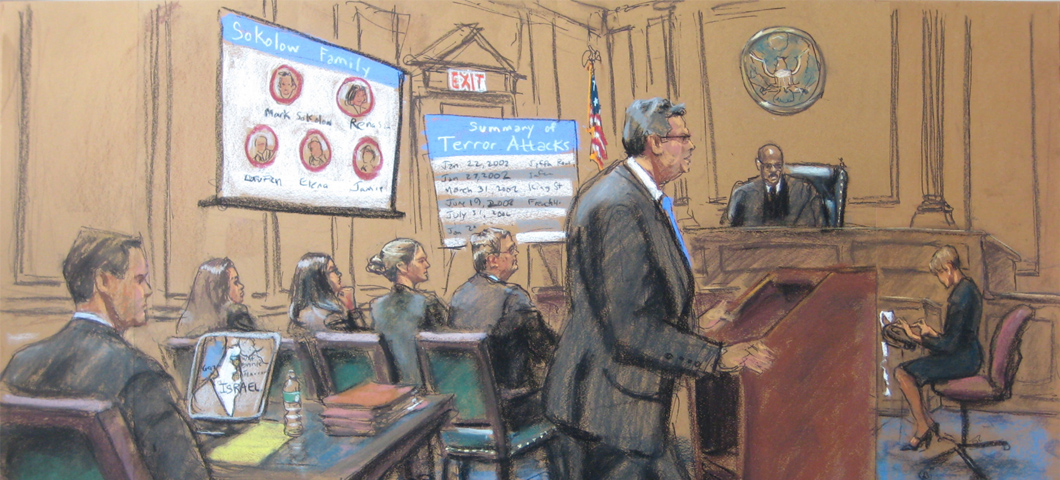Elevate Your Legal Experiment Ingenious Trial Presentations: Finest Practices and Suggestions
Elevate Your Legal Experiment Ingenious Trial Presentations: Finest Practices and Suggestions
Blog Article
Navigating the Intricacies of Trial Presentations: Tips for Seamless Distribution and Compelling Debates
In the realm of lawful procedures, the art of test discussion stands as a critical determinant of success. The complexities fundamental in trial presentations require a delicate balance of skill, finesse, and technique.

Comprehending Test Purposes
To effectively navigate a trial, it is vital to have a clear understanding of the purposes that need to be achieved. Before entering the court, lawful groups have to specify their objectives and desired outcomes. These objectives serve as directing principles throughout the trial, shaping techniques and affecting decision-making processes.
Comprehending test goals includes a detailed evaluation of the situation, lawful precedents, and the client's finest rate of interests. Trial Presentations. It needs a careful assessment of the truths, determining essential problems, and anticipating potential challenges. By setting quantifiable and certain goals, attorneys can tailor their discussions and disagreements to straighten with the desired outcomes
Furthermore, a clear grip of test purposes makes it possible for lawful teams to prioritize proof, witnesses, and lawful disagreements efficiently. It allows for the development of a systematic story that reverberates with the judge and court, enhancing the general case discussion.

Organizing Evidence Properly
Having a clear understanding of test purposes lays the foundation for organizing proof successfully in legal proceedings - Trial Presentations. By aligning the discussion of evidence with the desired end results of the test, legal groups can enhance their disagreements and enhance their persuasiveness. One critical facet of organizing proof is classification. Grouping proof based on themes or importance to certain legal components can assist streamline the discussion and make complicated details a lot more digestible for the court or jury.
An additional secret component in organizing proof effectively is developing a logical flow. Offering evidence in a systematic and sequential manner can aid build an engaging story that supports the legal debates being made. Additionally, utilizing aesthetic aids such as charts, timelines, or graphes can better enhance the organization of proof and aid in clarifying complicated partnerships or sequences of events.
Moreover, making certain that all evidence provided is relevant and acceptable to the situation is crucial. Inadmissible or pointless proof can diminish the strength of the argument and potentially hurt the reputation of the here and now celebration. A meticulous review and selection process should be undertaken to include just the most impactful and legally audio proof in the trial presentation.
Crafting Persuasive Narratives
Crafting engaging narratives plays a pivotal duty in presenting influential disagreements throughout legal process. When building a story for a trial discussion, it is necessary to establish a clear story that highlights key factors and connects them in a meaningful manner. By weaving with each other evidence, statement, and lawful disagreements right into a persuasive and cohesive story, legal experts can effectively promote for their customers and enhance the probability of a favorable result in the court room.
Grasping Aesthetic Help
Effective use aesthetic help is essential to boosting the influence and clarity of trial discussions. Aesthetic aids, when used tactically, have the power to streamline complex info, enhance vital points, and leave a long lasting impact on the check court and jury. To master visual aids in test discussions, it is critical to guarantee that they are clear, concise, and appropriate to the debates being made.
When including aesthetic aids, such as charts, pictures, timelines, or charts, right into a top article test discussion, it is necessary to keep them visually appealing yet expert. The visuals ought to match the verbal disagreements, offering a graph of the info being talked about without overwhelming the audience with unnecessary details.
Moreover, exercising with the aesthetic help in advance is imperative to ensure a smooth distribution throughout the test. Familiarizing oneself with the content, transitions, and timings of each aesthetic help can assist keep the circulation of the presentation and prevent technological problems that might occur.
Delivering Impactful Closing Arguments
An engaging closing disagreement works as the culmination of a test discussion, encapsulating the core story and encouraging the judge and jury in the direction of a positive decision. To deliver an impactful closing debate, it is important to succinctly wrap up bottom lines, highlight the staminas of your case, and resolve any type of weaknesses in a critical way. Begin by outlining the major disagreements that sustain your customer's position, stressing why the evidence offered throughout the trial sustains your narrative. It is necessary to produce a sense of communication and clarity, leading the discretionary towards the wanted conclusion.
Additionally, incorporating psychological charm can better enhance your closing argument. By connecting and humanizing the situation on an individual degree with the decision-makers, you can evoke empathy and understanding, affecting their assumption of the facts provided. In addition, reiterating the legal requirements that have to be met for a positive judgment can enhance the credibility of your setting. Inevitably, a well-crafted closing argument ought to leave an enduring impact, engaging the discretionary to rule in your client's favor.
Conclusion
Finally, mastering trial presentations involves understanding objectives, organizing proof, crafting stories, making use of aesthetic help, and providing impactful closing disagreements. By executing these techniques efficiently, attorneys can present their case seamlessly and make engaging debates in the court. It is vital to navigate the complexities of test discussions with precision and skill to achieve success in lawful procedures.
By lining up the presentation of proof with the preferred results of the test, lawful teams can strengthen their debates and improve their persuasiveness (Trial Presentations). To master aesthetic help in trial discussions, it is vital to make sure that they are clear, concise, and pertinent to the disagreements being made
A compelling closing debate offers as the culmination of a test presentation, encapsulating the core story and persuading the court and jury in the direction of a positive decision. top article Begin by laying out the primary arguments that sustain your client's placement, emphasizing why the proof provided throughout the test supports your story.In final thought, understanding trial discussions includes recognizing goals, arranging evidence, crafting stories, utilizing aesthetic aids, and providing impactful closing arguments.
Report this page